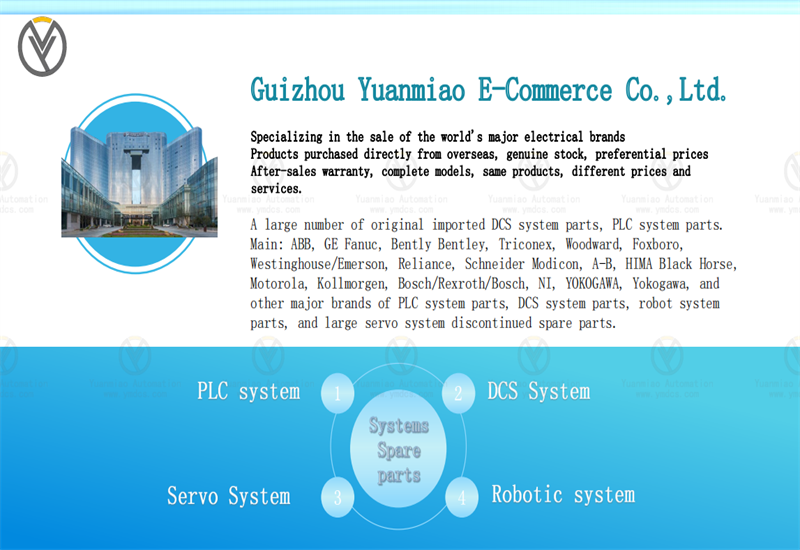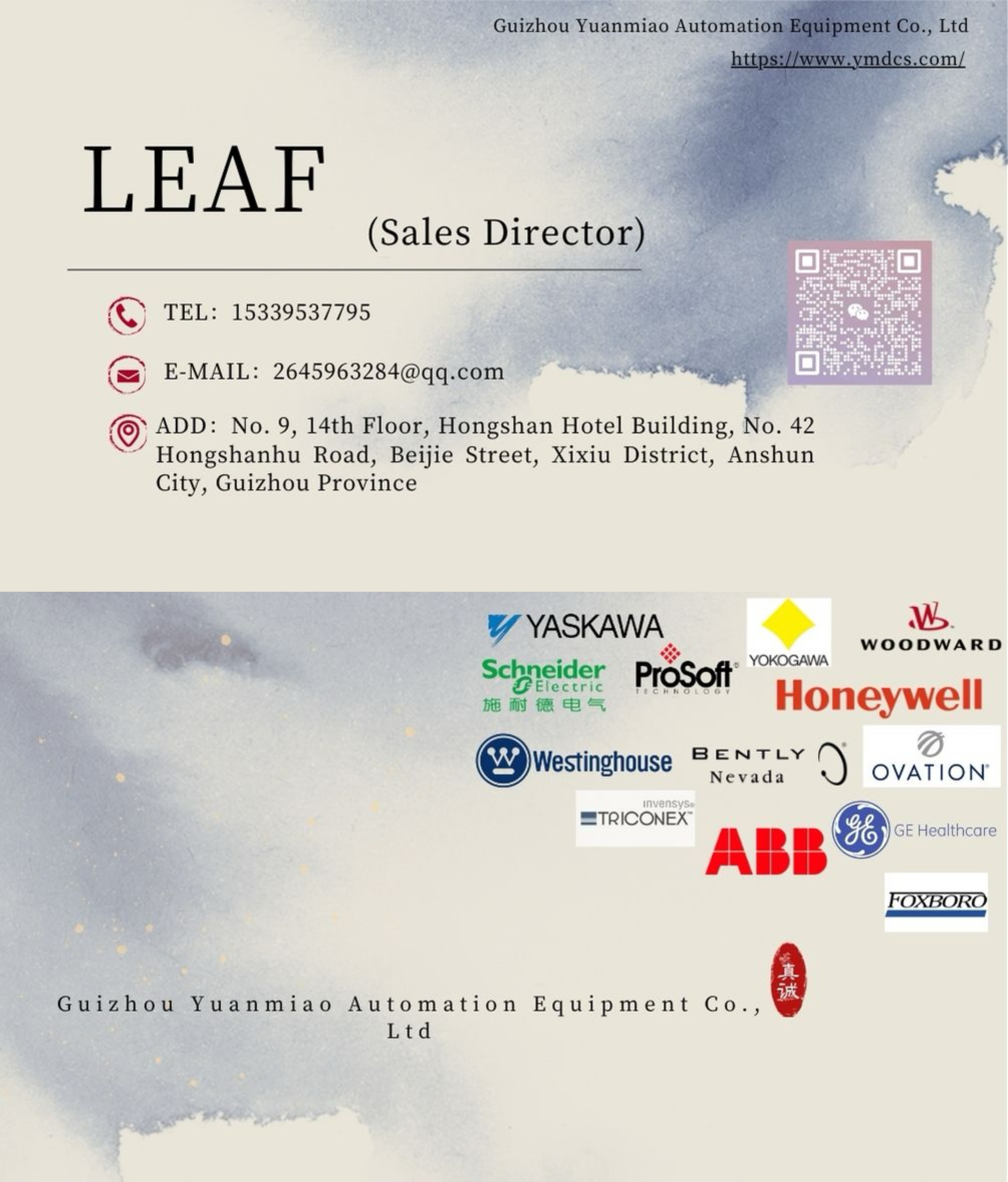Description
ABB excitation controller (also known as excitation equipment controller) is mainly composed of exciter (TP), AC contactor (FP), AC driver (DP) and excitation control system (TS). Exciter is one of the most important components of ABB. The excitation controller (TP) is one of the most important parts of ABB (ABB master controller). The ABB excitation controller (TP) converts the excitation voltage into an AC voltage output (IO). The role of the AC contactor (FP) is to release the direct current generated by the ABB master controller by heating the excitation coil below the required operating temperature. 1. Excitation control system The main control modes of excitation controller are: adaptive mode control (automatic multi-timemulti-charge), reactive power compensation and overload compensation. Excitation control system can be divided into reactive power control system (EMI) and reactive power compensation system (DMTC). EMI is mainly composed of reactive power compensation devices, which are compensated by reactive power method. DMTC is mainly compensated by current transformer, usually by three-phase compensation or two-phase semi-compensation. DMTC is often used in some occasions that do not require frequent starting or insufficient reactive current, but if there is a higher frequency of excitation current; DMTC is a kind of rectifier drive device composed of three-phase compensation, which can be used to control the current harmonic content in the case of low; At the same time, with the development of control technology and the expansion of application range, DMTC has basically replaced the traditional reactive power compensation device and applied in reactive power compensation. At present, ABB’s production environment is relatively complex; So the service life is relatively short; When the power factor is low, the current harmonic content is high and the frequency is high, the FCWS system can not be used to compensate the scheme. Need to control the excitation current of the environment parameters such as: magnetic flux density; Need to compensate for reactive power occasions: such as fans, generators, etc.; Need to field current frequency applications: such as motor, motor controller, etc. The purpose of controlling reactive power, current and frequency is achieved by the above control means. The excitation control system is composed of the excitation regulating circuit and the excitation flux display regulator. The excitation permanent magnet AC driver plays the driving role.
2. excitation control principle The output of the exciter is direct current, so it is very little affected by alternating current. However, if there is a large impact on the power grid, overvoltage or short circuit current, the excitation control system can not work stably, and when the power grid has a large frequency deviation, the excitation controller is prone to transient overvoltage phenomenon, resulting in power grid impact, overvoltage accident and circuit breaker trip. In addition, if the control accuracy of the excitation control system is poor, there will be overvoltage or short circuit phenomenon. Since the excitation controller itself does not work, its control system (TS) is in an intermediate state. Therefore, its control signal is directly fed back to the control system (TP). When the excitation controller output signal is zero, the excitation controller can not be used as a load (such as: frequency converter), only when the signal is sent by the AC driver, the exciter can be used as a load and produce a control signal that acts on the grid frequency, voltage and current to achieve the regulation and control function of the grid voltage and current (such as: frequency converter). 3. Excitation control method There are two kinds of excitation control methods, one is frequency control method and the other is power control method. The power control method is mainly used for speed regulation and protection of the motor. The frequency control method can realize real-time on-line control of excitation generator speed, power and other parameters, but it also produces many problems that affect the safe operation of excitation equipment. Because excitation control can not adjust the load current, can not effectively adjust the excitation current density, excitation equipment start-up reactive power capacity limit, the motor start-up reactive current limit, excitation transformer long-term overload and other reasons, the frequency control method is mainly used in the excitation control of medium frequency generator or high power factor generator excitation control. The power control method is mainly used in the excitation control of medium-frequency generator with AC contactor as the main controller.

[Disclaimer]
Guizhou Yuanmiao Automation Equipment Co., LTD. We sell new products and discontinued products, independent channels to purchase such special products. Guizhou Yuanmiao Automation Equipment Co., Ltd. is not an authorized distributor, distributor or representative of the featured products on this website. All product names/product images, trademarks, brands and logos used on this website are the property of their respective owners. Descriptions, descriptions or sales of products bearing these names, pictures, trademarks, brands and logos are for identification purposes only and do not imply any association or authorization with any rights holder.
This article is from the official website of Guizhou Yuanmiao Automation Equipment Co., LTD. Please attach this link: http://www.ymdcs.com/ABB/











